Follow these tips on how to grow cantaloupe to start cantaloupe from seed or seedling and care for them until harvest.
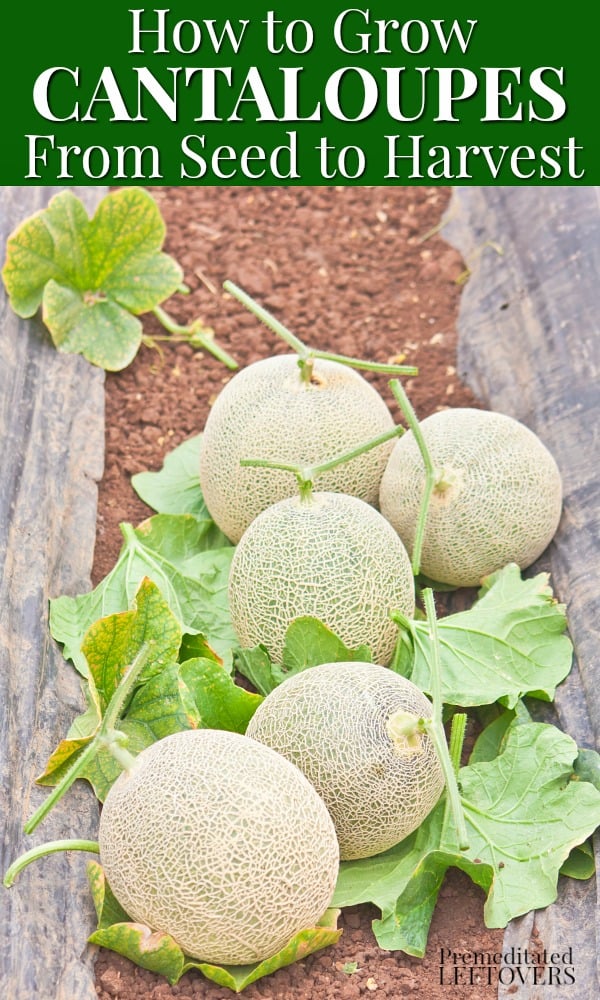
Do you love the sweet taste of cantaloupe? If so, why not try growing it yourself? Having fresh cantaloupe at your fingertips is a great way to enjoy the summer and a great way to save some money as well. If you are considering growing cantaloupe this year, take a look below at these tips for how to grow cantaloupe yourself. You might be surprised at how easy it really is!
How to Grow Cantaloupe
How to plant cantaloupe seeds:
If you wish to begin your seeds indoors and get a jump on the growing season, simply plant the cantaloupe seeds in seed starters. You want to do this about 3 weeks before the final frost of the season. Use nutrient-rich soil and make sure the seeds have at least 6 hours of sun per day.
Should you wish to plant the seeds directly outdoors, be sure the threat of frost has passed since cantaloupe loves warm soil. You can use the hill method where a hill of soil is created and 5-6 seeds are dropped in, or you can plant as you would most other seeds. Whichever way you choose, your seeds should be planted one 12-18 inches apart so there is plenty of room to stretch.
As with other melon varieties, you want really rich soil and full sun. Cantaloupe will thrive off of the nutrients, and the warm soil and sun will help them mature quicker. Once your seedlings start to appear, you will want to thin out the plants. Remove the weaker and smaller plants in the group to allow the larger ones to stretch and thrive.
How to plant cantaloupe seedlings:
If you wish to plant cantaloupe seedlings instead of seeds, you may notice quicker results. You should still use all of the suggestions above when planting, including nutrient-rich soil, full sun, and proper spacing between plants. Don’t plant your seedlings before outdoor temperatures have reached a consistent 70 degrees or higher.
After a few weeks, you may wish to stake your plants to help offer them support and keep them from sitting in damp soil. Stakes can also help you see weeds better amongst the vines and remove them as needed. This is also the ideal time to use a plant or garden food on your cantaloupe, however, they will do fine without the feeding if you wish to skip this step.
How to care for cantaloupe seedlings:
The wonderful thing about cantaloupe is they don’t attract many pests. You may just need to keep a light netting over them if you see animals starting to pick at them. As far as bugs, however, there usually isn’t a need for a pesticide.
Continue to give your cantaloupe seedlings 1-2 inches of water per week, applied at the base and not over the top of the plant. If water is allowed to accumulate on the greenery, rot can occur. Drip irrigation is a wonderful option for cantaloupe and can help them safely get the water they need.
Be vigilant about weeds during the early growth of the cantaloupe. You don’t want weeds to get out of control as they will get mixed up with the vines of the plant. Be sure you pull them as you see them so you can stay on top of their growth and they don’t interfere with your plants.
How to harvest your cantaloupe:
When you notice the bulb appear, you can wrap it in a pantyhose to protect it and place it on a piece of tin foil to help keep it warm. This will help it mature quickly and taste great! After about two weeks the bulb will be full size and can be picked. You will notice a sweet smell and soft feel when the cantaloupe is ready to be picked. Cut it from the stem and move it to a cool place for storage.
Cantaloupe is great for fruit salads and appetizers, so why not try growing your own? Give these tips a try and you are sure to enjoy a successful crop.
More Tips for Growing Fruits
Gardening Tips for Growing Raspberries
Gardening Tips for Growing Gooseberries
These tips on growing cantaloupes in your garden were originally published on March 18, 2015. They were updated on January 15, 2020.
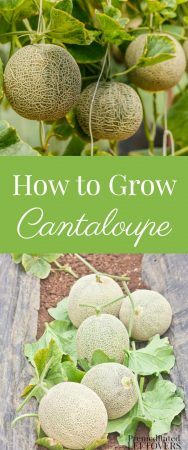
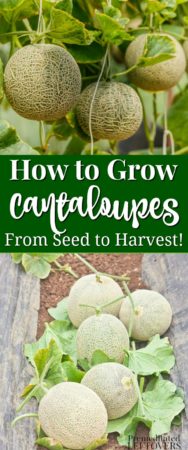
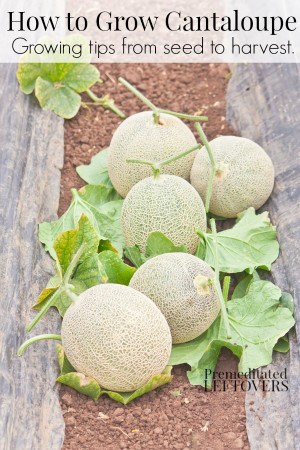
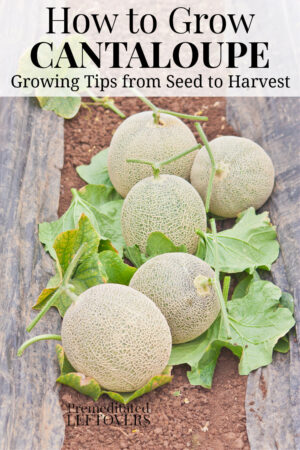
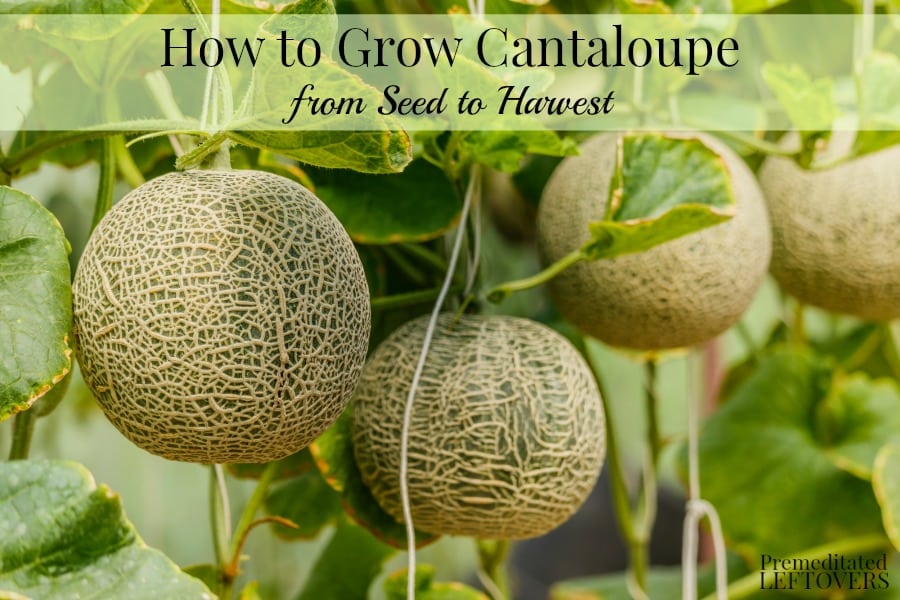
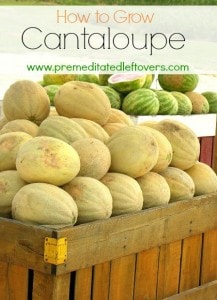

michael soudant says
My 2 plants grown in lick buckets, about 30 gallon tubs, did pretty well but I realized too late that pollinators were absent. Manual pollination is easy if you do it while the flowers are still in bloom but not if the petals fall. Ultimately one of my beautifully healthy plant died overnight. I think is was squash bugs. I burned the remains.
Paul Schenck says
I grow cantaloupes in hay bales, 2 per bale. my favorite is ambrosia; juicy, sweet, and wonderful cantaloupe flavor.
I’ve had great results making cantaloupe jam. you should try it.
Mary says
Do you put anything in the hay like dirt or anything?
LISA PARSON says
I use hay bales also…you should sprinkle fertilizer on them and water thoroughly for 3 weeks adding fertilizer each week. Then take a stick or something to poke into bale and go round and round and fill with good Potting soil. About 1 cup plant your seeds or seedlings and you only have to water with a cup at base of plant. Need 6+ hours of full sun daily. No need for more fertilizer. Good luck
Constance says
The best , tasty, big Cantaloupe is to plant seeds with pepper seeds . No pest , no animals.
They are the best companion Nothing is required just watch them grow together in peace and harmony and they are healthy
with little watering when vines are dried up in mid October Cantaloupes are ready and peppers goes on until the first frost .
I now took some plants with peppers indoors for winter consumption, too many plants with peppers to leave out side
and can replant them again outdoors in the spring . ( Living proof )
I then save some seeds for the next late Spring planting along with plants back to their home in the garden .
Invest in your garden thoughts ,Fun,Fun,Fun
Mary says
What kind of peppers?